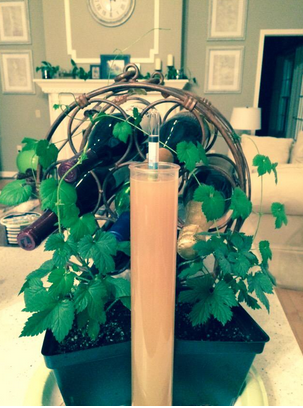Well, somehow I just deleted my whole response, so here goes trying to redo it:
I have been checking estimated mash pH tab, shooting for 5.2 pH every time.
Are you making sure that you're adjusting to proper volumes in both the water additions tab, and in the mash acidification tab? Are you entering your grain bill accurately? And how confident are you in your source water? There's a pretty large degree of seasonal variability in a lot of water supplies. If the actual alkalinity is higher than you think it is, you could indeed be getting too high of a pH.
So as I understand it, there are two possible problems. Oxidation and excessive particulate.
(1) To handle the particulate, I'll use finings (maybe both Irish moss and whirlfloc), cold crash before bottling, and take steps to minimize sediment pickup at all steps. Also leave it in the fermenter longer. Is cold crashing before bottling a good idea? I have a keezer I could put the fermenter in.
You don't need to use Irish Moss AND Whirfloc. They're essentially the same thing, and if you use both, you can overdo it. I would just use whirfloc. Make sure you're getting a good strong rolling boil so you're getting a good hot break. If you're using a continental Pils malt (German or Belgian) you may actually get some help from doing a protein rest, but if you're using American or UK malts that'd do more harm than good. You could also use post-fermentation finings (PVPP, gelatin, isinglass, etc). As long as the beer has full fermented and conditioned (no residual diacetyl/acetaldehyde, etc), and you get it to drop clear, either from time or cold crashing, you should be good to go. Doesn't necessarily mean you have to leave it longer, but generally leaving it longer won't hurt. Cold crashing would certainly speed the process, but don't do it until the beer has fully conditioned and cleaned up after itself post-fermentation.
And then make sure you're not dumping the yeast from the bottom of the bottle into the glass, or you're defeating the whole point.
Also, are you doing a vorlauf? That was a reason I stopped doing BIAB, I found that being able to vorlauf and get clear wort into the boil kettle gave me clearer final beer.
(2) As far as oxidation, I can't figure out the issue. I don't stir the mash, do all of my runnings into one big pot that goes on the boil, I then chill right in that big pot. Then pour it into a bucket (primary fermenter) and oxygenate. When its time to bottle I rack from the primary fermenter into a bottling bucket then use a spigot and bottling bucket to fill up bottles and cap with O2 absorbing caps. So while I'm not using CO2 or anything, I can't find anything in my process that would result in the color darkening that much in 2 weeks.
Anybody have any other ideas or things I could do differently? I'd feel much better about my beer if I figured this problem out.
And thanks again, you guys are great.
First thought: hot side aeration is a boogeyman, so don't worry about not stirring the mash. Not stirring is good for maintain temp, but you then have to worry about hot spots, and it may not remain consistent. On the other hand, if you stir too much, the worry isn't oxidation but rather just losing too much temperature. I wouldn't INTENTIONALLY try to aerate hot wort, but in the case of a SEVERE stuck mash (or if the false bottom comes disconnected or something, which has happened a couple times), I've had to resort to dumping the entire mash out of my MLT into a kettle, repairing, and then dumping it back. If anything would cause HSA, that's it. And no issues on my end. Although as always YMMV. Point is, I wouldn't worry about HSA being your source. It definitely wouldn't be enough to do this much damage.
Second: Is the lid on your bucket sealing properly? If you're getting good airlock activity then you're probably ok. However, if you're not, and there's a leak, contrary to popular believe, just because CO2 is heavier than air doesn't mean it just sits atop as a blanket if the lid is open (or cracked). Oxygen will still diffuse in over time. During active fermentation this isn't an issue because enough CO2 is produce to prevent it. But after fermentation stops, it could be a problem. But again, if you're getting good airlock activity you're probably fine there.
Third: When you rack to your bottling bucket, are you using a hose long enough to reach the very bottom of your bottling bucket, or otherwise elevating the bucket to do the same? I have seen many, MANY homebrewers who just let the hose dangle and the beer freefall from the hose to the bottom, splashing and frothing away, or run down the side of the bucket. Both of these can introduce a significant amount of oxygen. The hose needs to reach the very bottom of the bucket, and even go so far as to tilt it initially so that the end of the hose is underneath the surface as soon as possible.







